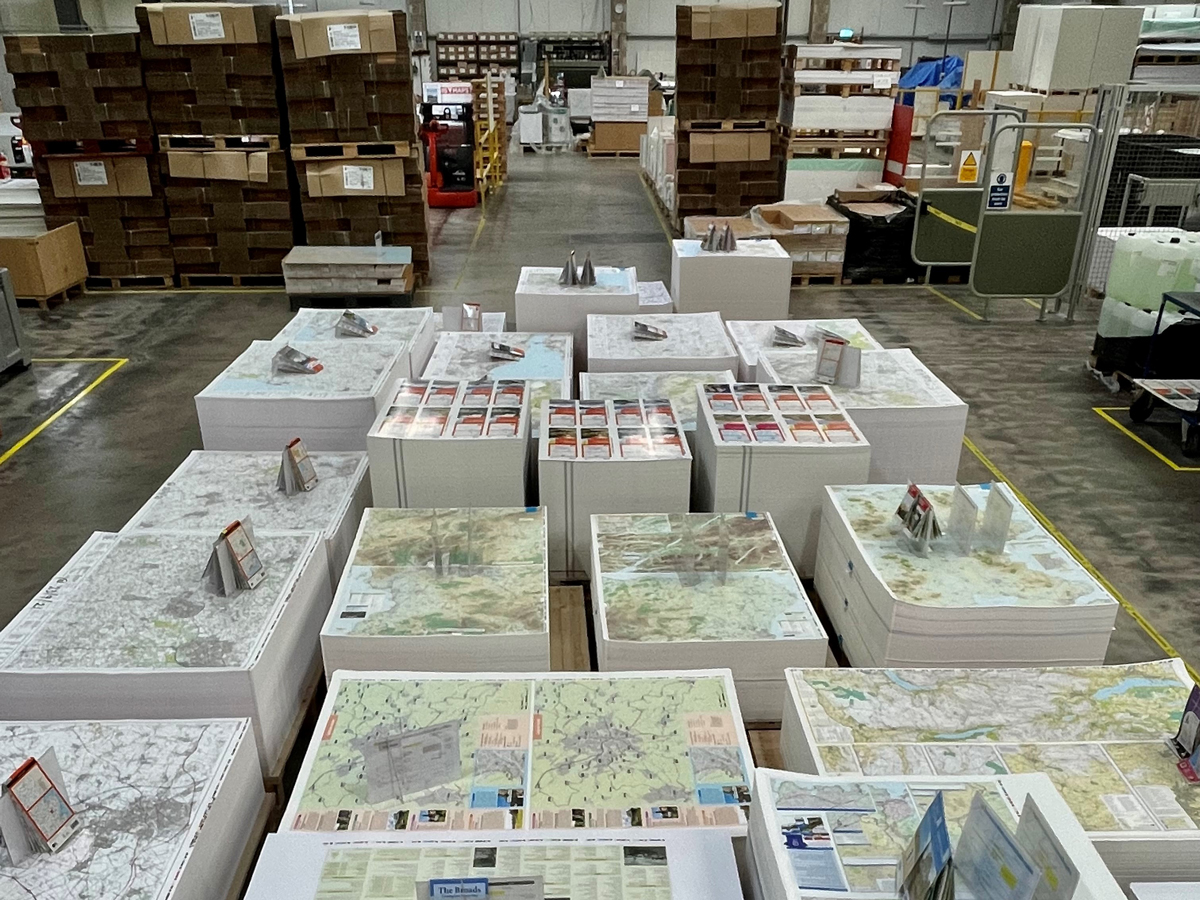Exploring the world of printed maps

On a hot day towards the end of June I was excited to be able to visit Dennis Maps, the largest printer of paper map products in the United Kingdom. The company produces more than two million maps and charts each year and can trace its original heritage back to 1850. It is located in the lovely Somerset market town of Frome, about 18 km south of Bath. Apparently, Frome once topped a list of the 10 most difficult-to-pronounce place names in the UK. It’s really not hard though: you just have to remember to say “Froom”.
I was part of a group of about 15 members of the Charles Close Society, which is dedicated to the study of Ordnance Survey (OS) maps. We were invited to Dennis Maps by its Managing Director, Steve Burry, who I also know as a fellow member on the Council of the British Cartographic Society.
Dennis Maps prints a number of products for different map publishers, but most notably it prints a large range of OS mapping, including its iconic Landranger and Explorer maps. The OS ended 200 years of printing maps on its own premises when it moved to its current HQ at Adanac Park on the outskirts of Southampton in 2011.
We began our tour in the section that produces OS Custom Made maps. These are output on a pair of Canon ColorWave 700 large format printers, which look similar to the machines we have in the Library. One difference is that, instead of liquid ink, they use solid ink ‘pearls’. The cartridges look like they are filled with M&M’S! Everything was done in one room and it was fascinating to see the process of printing the map, attaching its unique cover by hand and packaging it for despatch to the customer. If you think paper maps are dead, then you’re wrong. We were told that during their peak time just before Christmas the team will print 1,000 custom made maps every day. Imagine the Library’s two large format printers outputting at that rate.
The bulk of their printing is done on a traditional litho printing machine, which is more cost effective than digital when printing large quantities. We started the next part of this printing journey by visiting the pre-press section. Here, experts make subtle adjustments to the clients print files, a pre-flight check is made to ensure each file contains all the correct elements for a successful print, and then a printed proof is produced and folded if necessary. Finally, large format aluminium printing plates are made in a Kodak platesetting machine. Ordnance Survey maps are usually printed in four colours, so four plates are required, one each for black, cyan, yellow and magenta.
We then moved on to see the enormous KBA Rapida printing press, which I estimated was printing about 90 OS map sheets a minute. In my view, the highlight was to see the final part of the process – the map folding machines. These, like most of the other equipment, are owned by the OS and leased to Dennis Maps. Obviously, these devices are custom made and highly specialised. The map casing machine, which automatically glues the cardboard map cover and attaches it to the folded map, is unique and incredible to watch. It was definitely a piece of kit that would appeal to our mechanical and design engineering students.
I am very grateful to Steve and his team for giving up 2 ½ hours of their day to show us round. If you want to come and see examples of the material that Dennis Maps prints, just come and visit the Map Library!




What an amazing opportunity to see how maps are printed. I’m sure some of the Graphic Design and Illustration students would love to hear about this! Thanks for sharing.